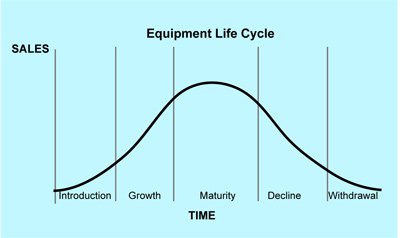
Would you Choose a Systems Integrator or an Original Equipment Manufacturer for Your Logistics System?
Bastian Solutions | 16 February 2012
Let's start with a few basic terminologies: A Systems Integrator (SI) is an individual or business that designs, installs, and commissions logistics systems for clients by combining equipment, controls, and supply chain software products from multiple vendors into a turnkey solution. An Original Equipment Manufacturer (OEM) is an individual or company that manufactures certain types of logistics equipment and supplies these to clients. Logistics, in this context, is the equipment used for the flow of goods between the point of origin into a warehouse, to the storage, picking of these goods, and the point of destination out of a warehouse. These can include but are not limited to conveyors, AGV's, robots, pallet racking, pick modules, shelving, AS/RS (ASRS) equipment, controls, and software. There are three key elements that differentiate a Systems Integrator (SI) from an Original Equipment Manufacturer (OEM):
Element 1 - Product Life Cycle
A product life cycle shows how a product performs from the initial concept until it is outdated and new technology comes in. This can be depicted in a graph (refer adjacent). The main difference here is OEM's will tend to sell their products only. To ensure they can meet demand of the system they're installing, OEM's will use their introduced/growth products to support their declining/withdrawing products to provide a client with a satisfactory solution. There are two potential problems with this:
- When choosing only their products, OEM's might hinder further throughput of the system.
- When spares are required, they might be obsolete or no longer available if declining/withdrawing products were used.
On the other hand, an SI would look at a range of introduction/growth style products to provide a full, cutting-edge solution that could grow and have spares available for the long term.
Element 2 -- Integration of products
Generally most OEM's do not integrate other manufacturers' products with their own. So when they need to use them to create a working system, it results in a Band-Aid solution that typically isn't ideal. An SI looks for the best solution for a client. He or she has experience in continually and successfully integrating different suppliers' products into the architecture of systems and knows how to make them work and communicate with each other.
Element 3 -- Choice of system products
From my experience, OEM's will push and maximize the use of the products which return them the most profit, selling their commodity items with little or no technology. Generally, they are trying to sell in the SI space just to facilitate sales of their commodity items. The SI wants to give the client the correct solution and the best mix of products. Their focus is to provide a system that gives the end user the best possible ROI by combining the best mix of materials handling solutions and technologies.
The big question is who would you choose?
Bastian Solutions, a Toyota Advanced Logistics company.
We are a trusted supply chain integration partner committed to providing our clients a competitive advantage by designing and delivering world-class distribution and production solutions.
Our people are the foundation of this commitment. Our collaborative culture promotes integrity, inclusion, and innovation providing opportunities to learn, grow, and make an impact. Since 1952, Bastian Solutions has grown from a small Midwest company into a global corporation with over 20 U.S. offices as well as international offices in Brazil, Canada, India, and Mexico.
Comments
Material Handling says:
8/28/2018 10:08 AM
Systems Integrator solutions gives the consumer the best output with optimum resources and with maximum efforts and least human efforts. These integrated solutions are more in demand by big organizations and companies due to their cost effectiveness and high output levels.
MATERIAL HANDLING EQUIPMENTS says:
8/28/2018 10:08 AM
DILIP MATERIAL HANDLING EQUIPMENT manufactures and suppliers of huge range of Material Handling Equipments suitable for a wide variety of users.
business to business branding | business internet sales & marketing consulting strategies says:
8/28/2018 10:08 AM
[...] working together - do not hesitate to get in touch. To your business success, Stephen C CampbellBusiness to business marketing and branding is at the heart of society considering that the majority...attention and for good reason when we consider that in some cases the sales process can take years [...]
Leave a Reply
Your email address will not be published.
Comment
Thank you for your comment.